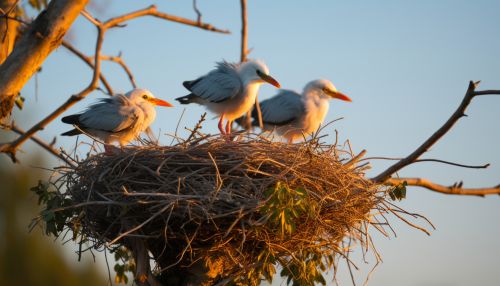Cooperative Breeding
Introduction
Cooperative breeding is a social system characterized by offspring from at least two different generations being present at the same time, with at least one generation helping to raise the offspring of another. This system is observed in a variety of animal species, including birds, mammals, fish, and insects. It is a complex behaviour that involves various ecological, evolutionary, and social factors.
Ecological Factors
Cooperative breeding is often associated with certain ecological conditions. These include high predation rates, limited availability of resources, and specific environmental characteristics that make independent breeding difficult. In such conditions, individuals may increase their inclusive fitness by helping relatives to reproduce, rather than attempting to breed on their own.


Evolutionary Factors
From an evolutionary perspective, cooperative breeding can be explained by kin selection theory. This theory suggests that individuals can increase their genetic contribution to future generations not only by producing their own offspring, but also by helping relatives to reproduce. This is particularly relevant in species where helpers are closely related to the breeders, such as siblings or offspring from previous breeding seasons.
Social Factors
Cooperative breeding also involves complex social dynamics. These include dominance hierarchies, conflict over resources, and negotiation over reproductive opportunities. In many species, helpers are subordinate to the breeders and may have limited opportunities to breed on their own. However, they can still increase their inclusive fitness by helping to raise the breeders' offspring.
Benefits and Costs
Cooperative breeding can have both benefits and costs for the individuals involved. Benefits can include increased survival and reproductive success for the breeders, as well as indirect fitness benefits for the helpers. Costs can include reduced opportunities for independent breeding for the helpers, as well as increased competition for resources within the group.
Examples in Different Species
Cooperative breeding is observed in a wide range of species. For example, in many species of birds, such as the Superb Fairy-wren and the White-winged Chough, helpers assist the breeding pair in raising their offspring. In some mammal species, such as the African Wild Dog and the Dwarf Mongoose, helpers contribute to various tasks, including pup care, territory defense, and foraging. In some fish species, such as the Neolamprologus pulcher, helpers assist in territory defense and maintenance. In some insect species, such as the Honeybee and the Naked Mole-rat, helpers contribute to various tasks, including brood care, food collection, and nest maintenance.
Conclusion
Cooperative breeding is a complex social system that involves various ecological, evolutionary, and social factors. It is associated with certain ecological conditions, can be explained by kin selection theory, and involves complex social dynamics. It can have both benefits and costs for the individuals involved, and is observed in a wide range of species.
